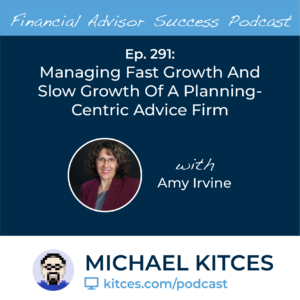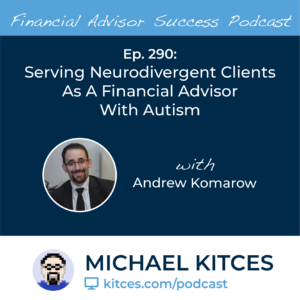 Welcome back to the 292nd episode of the Financial Advisor Success Podcast!
Welcome back to the 292nd episode of the Financial Advisor Success Podcast!
My guest on today's podcast is Matthew Topley. Matthew is the Founder and CIO of Lansing Street Advisors, an independent RIA based in Ambler, Pennsylvania that oversees $160 million in assets under management for 60 client households.
What’s unique about Matthew, though, is how he differentiates his firm by offering his high-net-worth clients opportunities to diversify their investment portfolios by syndicating private real estate partnerships that directly purchase individual multi-unit rental properties.
In this episode, we talk in-depth about how after years of working as a trader, Matthew realized his career and retirement were dependent on the stock market and decided to diversify his investments in real estate so that he could create passive income for himself, how after years of investing in his own real estate properties and struggling with management and landlord duties that made the real estate not-so-passive in reality, Matthew was introduced to ‘truly passive’ real estate investing through syndication deals and ultimately was inspired to offer those opportunities to his clients, and the tools and systems that Matthew has had to implement in order to scalably execute on private real estate syndication deals with his high-net-worth clients on an ongoing basis throughout the year.
We also talk about how, despite his deep roots in portfolio management as a trader, Matthew has built the center of his “virtual family office” solution for high-net-worth clients around their financial planning advice, why Matthew and his firm choose to outsource their financial plan preparation and other back-office services so that they can focus specifically on their client conversations around financial planning advice and real estate investment opportunities, and how Matthew has been able to so effectively differentiate his firm with its syndicated private real estate offering, even though, in practice, it tends to be no more than 10% to 20% of the typical client’s portfolio.
And be certain to listen to the end, where Matthew shares how, even though he has a background in institutional investing, he is surprised by the number of products still being sold to high-net-worth clients that are not in their best interests, why he feels it’s important for those entering the financial advisory industry to gain as much knowledge as possible and have a good sense of self-awareness to create a better path for a successful career, and why Matthew strongly believes in owning a firm as it gives him the freedom to make his own decisions, the time to work on the aspects of his business he truly enjoys, and the opportunity to create a bigger impact on society.
So, whether you’re interested in learning about how Matthew leverages real estate syndication deals to enhance his firm’s value proposition, how utilizing a “virtual family office” approach creates an essential one-stop shop for his high-net-worth clients, or how owning his firm has put him in a better mental and physical space to focus his energy on more positive attributes of his business and personal life, then we hope you enjoy this episode of the Financial Advisor Success podcast, with Matthew Topley.

 Welcome back to the 291st episode of the Financial Advisor Success Podcast!
Welcome back to the 291st episode of the Financial Advisor Success Podcast! Welcome back to the 290th episode of the Financial Advisor Success Podcast!
Welcome back to the 290th episode of the Financial Advisor Success Podcast!

